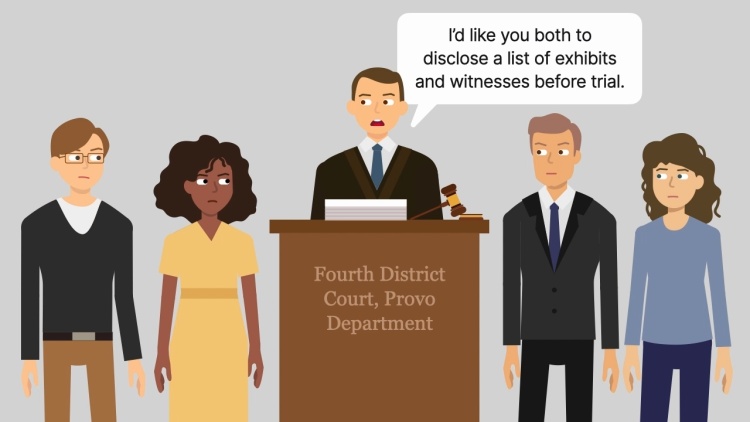Dahl v. Dahl
Utah Supreme Court
459 P.3d 276 (2015)
- Written by Rose VanHofwegen, JD
Facts
After 18 years of marriage, Dr. Charles Dahl (plaintiff) filed for divorce from Kim Dahl (defendant). Kim had been the primary caretaker of the couple’s two children and had not worked outside the home during the marriage. Kim requested temporary and permanent alimony as well as custody of the children. However, her attorney, Steve Christensen, turned pretrial discovery into what the court described as a “train wreck.” Although the court told counsel exactly what to provide, Christensen never provided adequate documentation of Kim’s expenses and need for support after four successive attempts. Therefore, the court had to deny her alimony requests. Christensen also repeatedly failed to produce exhibit lists specifically identifying and describing the exhibits he planned to introduce at trial and which witness would introduce them. As a result, the court excluded nearly all of Kim’s exhibits. Finally, Christensen designated experts to testify in support of Kim retaining custody but failed to prepare and file proper expert reports that complied with the procedural rules. The trial court concluded that the reports did not provide adequate notice of anticipated expert evidence and accordingly limited the expert testimony to the slim disclosures the reports actually made. Essentially Kim had no other evidence to support custody, so the court awarded full custody to Charles and no alimony for Kim. Kim appealed, arguing the trial court abused its discretion in excluding virtually all of her evidence.
Rule of Law
Issue
Holding and Reasoning (Parrish, J.)
What to do next…
Here's why 899,000 law students have relied on our case briefs:
- Written by law professors and practitioners, not other law students. 47,000 briefs, keyed to 994 casebooks. Top-notch customer support.
- The right amount of information, includes the facts, issues, rule of law, holding and reasoning, and any concurrences and dissents.
- Access in your classes, works on your mobile and tablet. Massive library of related video lessons and high quality multiple-choice questions.
- Easy to use, uniform format for every case brief. Written in plain English, not in legalese. Our briefs summarize and simplify; they don’t just repeat the court’s language.






